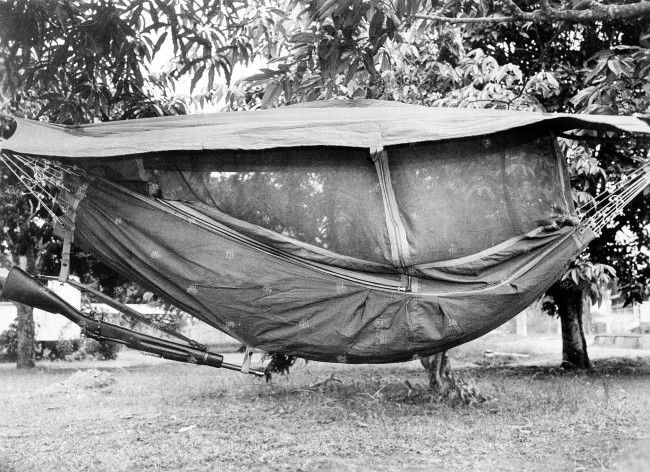
U.S. troops engaged in jungle maneuvers in Panama, August 5, 1942, have two methods of sleeping — in a canopy-covered hammock (above) suspended from trees or on the ground (below) covered by cloth for protection against insects. Note rifle suspended from hammock.
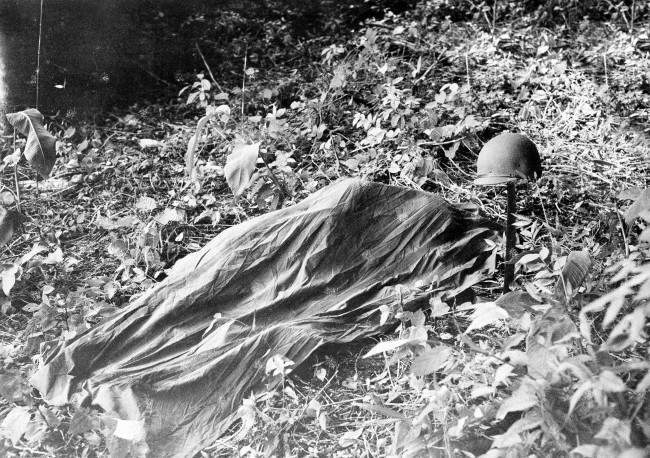
U.S. troops engaged in jungle maneuvers in Panama, August 5, 1942, have two methods of sleeping — in a canopy-covered hammock (above) suspended from trees or on the ground (below) covered by cloth for protection against insects. Note rifle suspended from hammock.
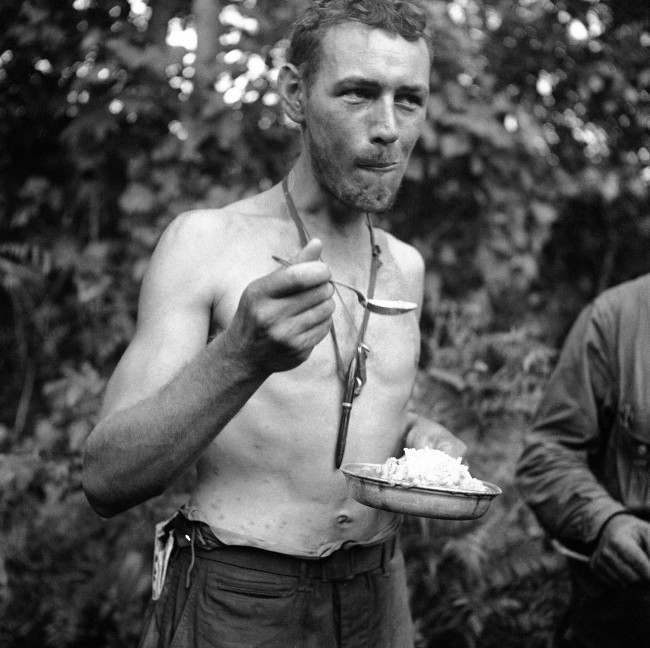
This unidentified U.S. soldier eats his first hot meal after 11 days in the jungles of New Guinea on Dec. 26, 1942, where he not only contended with Japanese who surrounded his group the last two days, but fought insects which raised welts on his mid-section.
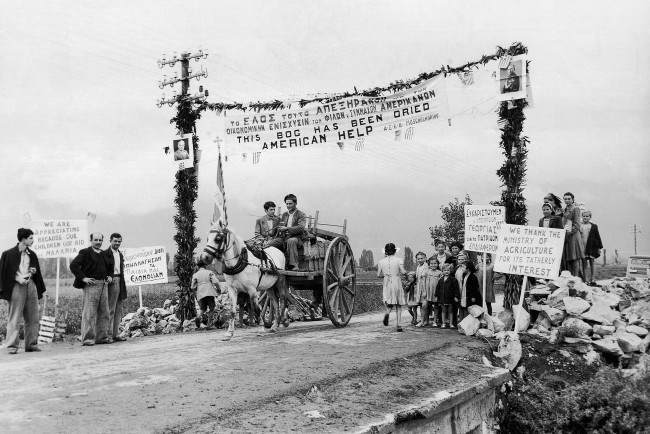
This arch outside Anthele, Greece on Nov. 14, 1946, is decorated with slogans thanking America for her help in farm development and for clearing malaria breeding grounds. A picture of President Harry Truman is on the post left.
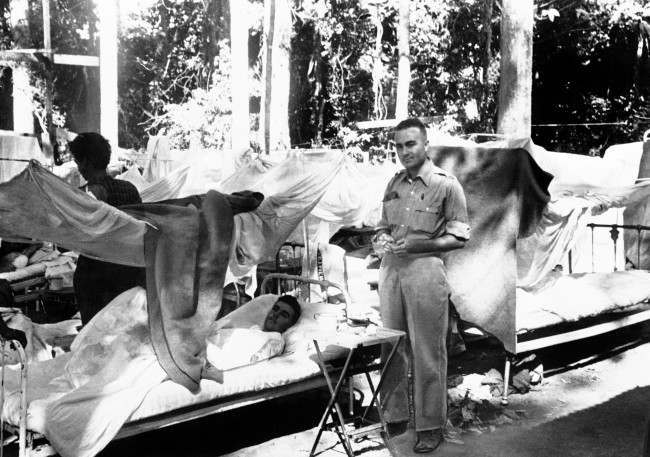
Bombing victims lie on beds with mosquito netting in an open-air army hospital in Bataan, Philippines, on April 11, 1942.
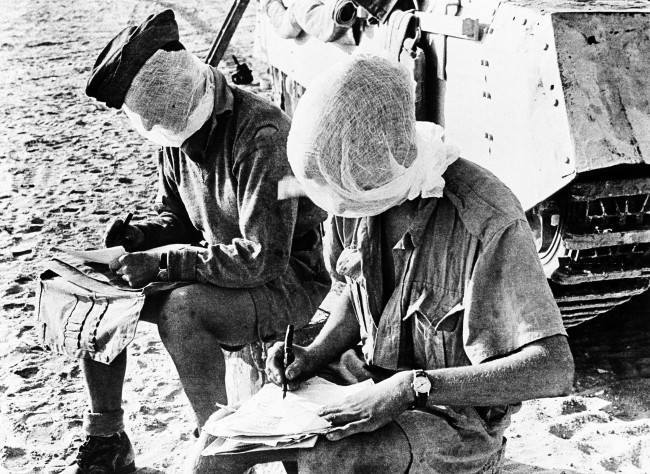
Members of a tank crew in the British forces in the Western Desert, in Egypt on Oct. 4, 1942, have to fight flies when they are not fighting the enemy. Soldiers writing home before a day’s patrol wear mosquito netting masks.
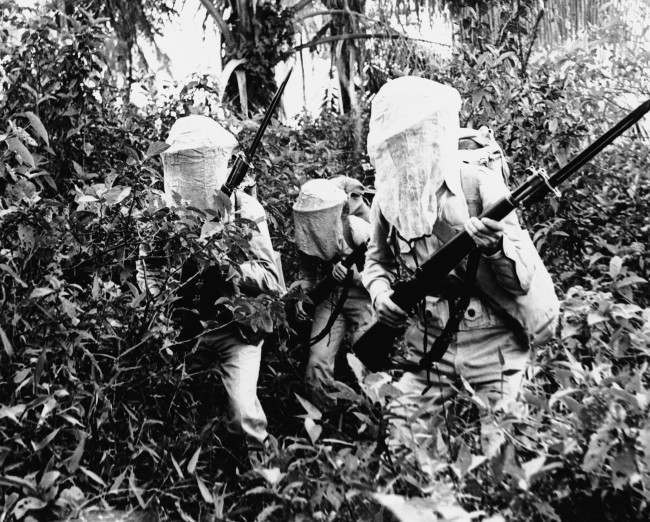
Protected by mosquito nets over their helmets, those United States soldiers stationed in Dutch Guiana are scouting through the jungle oApril 27, 1942.
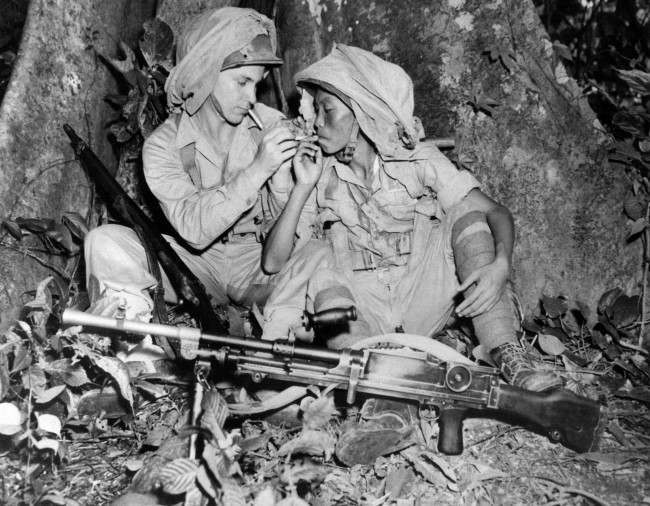
Corp. Rolf Krog, left, of St. Joseph, Mo., lights a cigarette for a Chinese soldier in the China-Burma-India theatre of operations on Oct. 14, 1943 where Chinese have been trained in use of American Army equipment for the past year. Mosquito netting in fastened to each helmet.
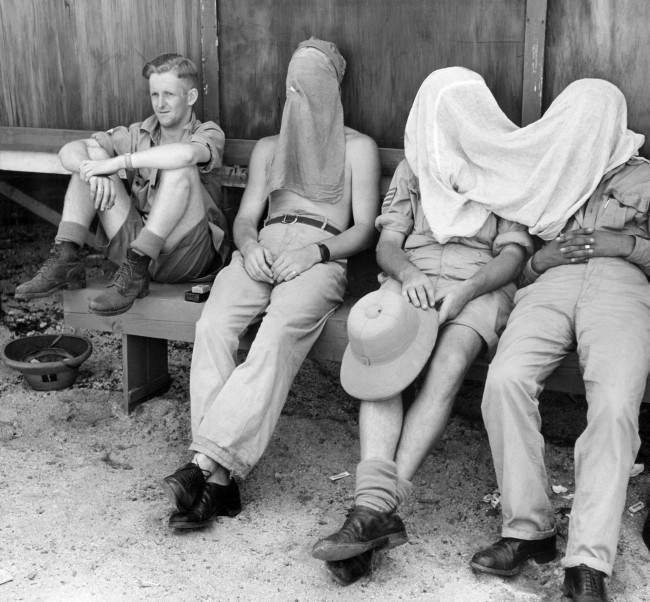
Protected by veils against the onslaught of the annoying and germ bearing-mosquito, three New Zealanders relax in the shade on Espiritu Santo on April 18, 1944, where they are receiving instruction in the operation of U.S. Navy planes. A comrade, scorning the netting, lets the mosquitoes fire away.
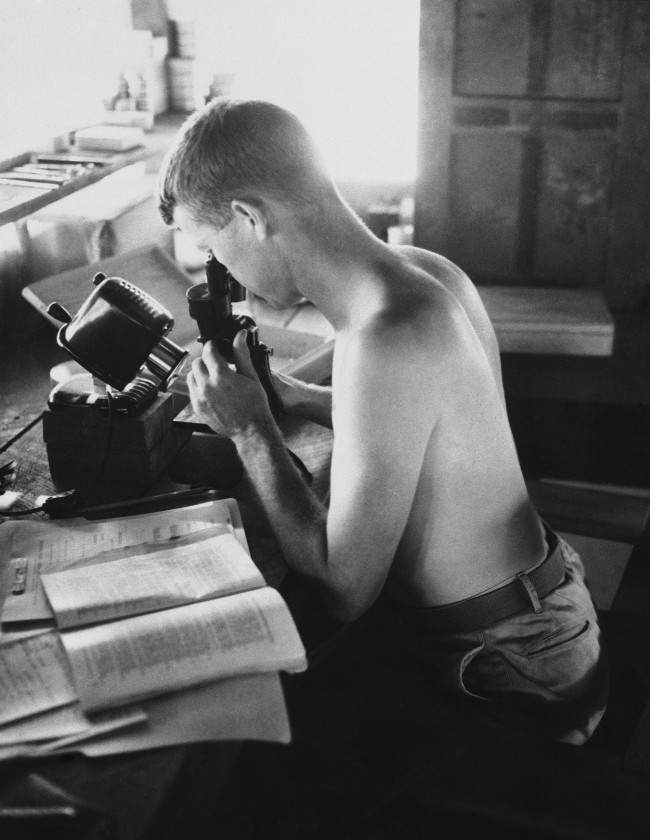
Commissioned entomologist Dr. James R. Douglas, of 3744 Sixth Ave, San Diego, Calif., examines a mosquito in the Malaria Control Unit’s entomology laboratory on the combat front in Guadalcanal on May 18, 1943. Specimens are classified, then filed in the box at right of microscope.
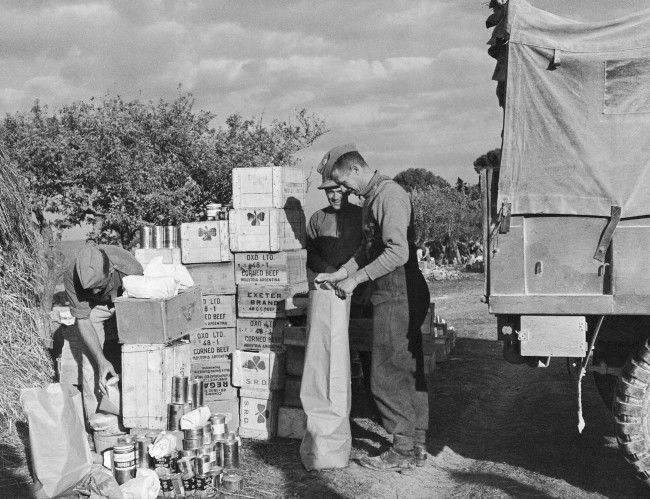
As far as the Royal Canadian Army Service Corps was concerned, the anti-malaria, synthetic quinine pill, Mepacrine, was just another item on the food list, to be rationed to units from supply points like bread and cheese and meat, Jan. 17, 1944. But as far as the Royal Canadian Army Medical Corps was concerned, Mepacrine in the Mediterranean was the difference between a strong healthy fighting forces an one which was ridden through with malaria. Men received their weekly ration of the little yellow tablets and the result among Canadians in North Africa, Sicily ad Italy was a less than 10\% malaria rate and only 0.25 deaths in every 1,000 men. Shown here is an R.C.A.S.C. supply point, with stocks of Mepacrine included among normal food items.
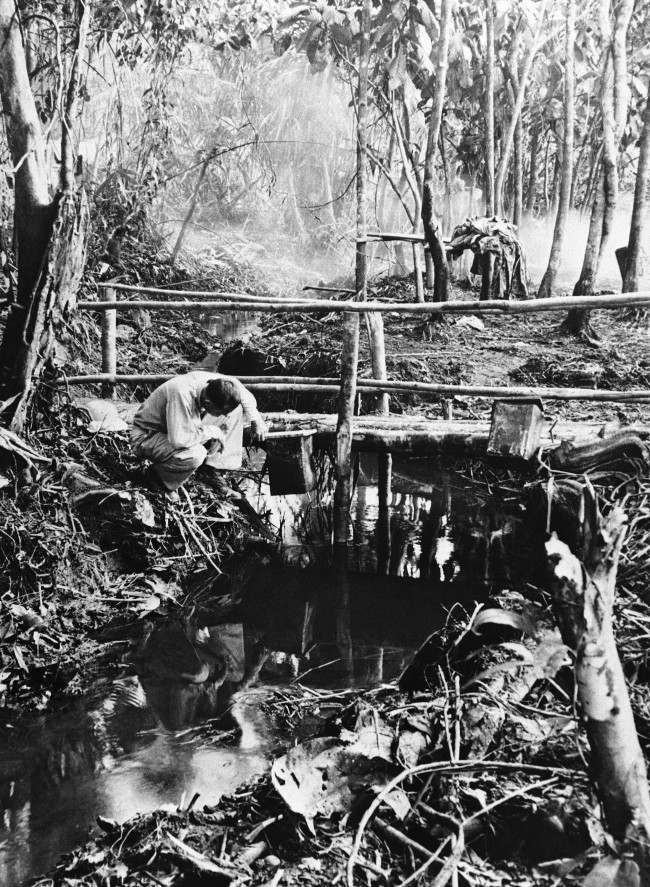
A U.S. soldier checks the oil supply in a drip can suspended from a foot bridge by Malaria control experts near a U.S. Army camp on South West Pacific Island of New Guinea, on August 26, 1944. Oil dripping from the can coats the surface of the sluggish stream and kills the larvae of Malaria-bearing mosquitoes.
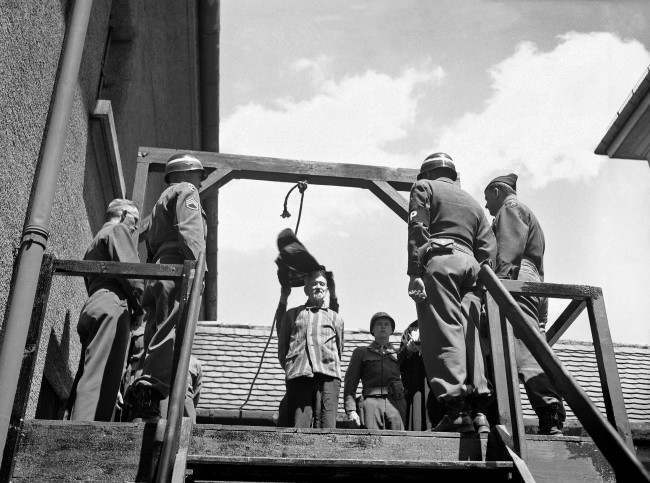
U.S. military authorities prepare to hang Dr. Klaus Karl Schilling, 74, at Landsberg, Germany on May 28, 1946. In a Dachau war crimes trial he was convicted of using 1,200 concentration camp prisoners for malaria experimentation. Thirty died directly from the inoculations and 300 to 400 died later from complications of the disease. His experiments all with unwilling subjects began in 1942.
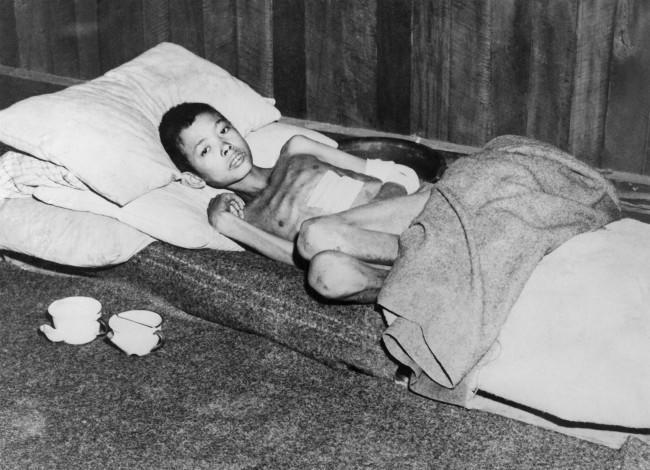
A 12 year old Burmese boy, Aung Thei was beaten by Japanese with shovels and rifle butts suffered 4, bayonet wounds, Feb. 26, 1945. He was buried alive in a shallow grave but he managed to crawl out. He made his way to a Basha where he was found by a patrol of the Royal Scots Fusiliers, 36th division. The lad of being treated by the Field Ambulance Company. In addition to multiple bayonet wounds in the chest, back and a below he is suffering from dysentery and malaria, is recovery is expected.
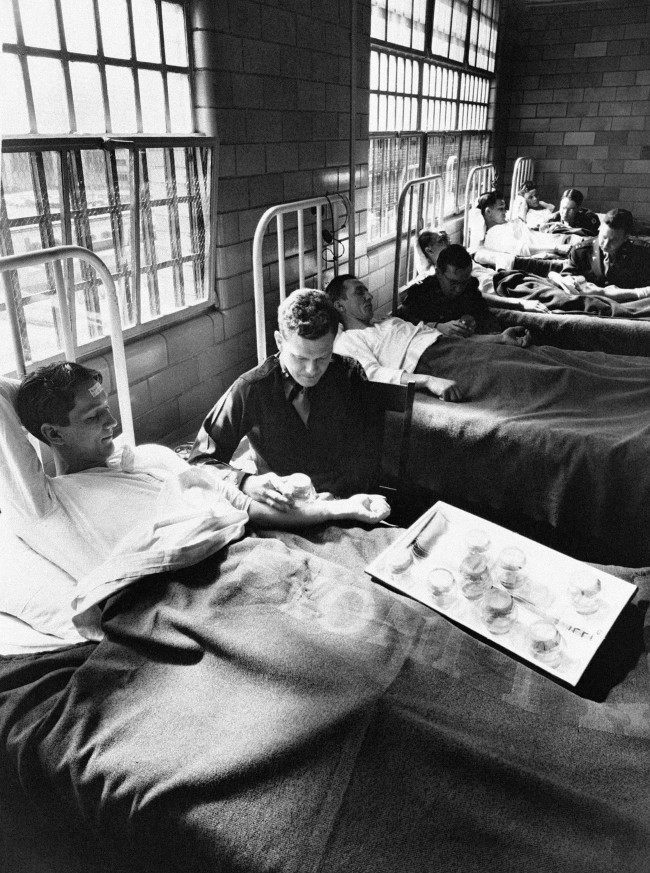
In this June 25, 1945 picture, army doctors expose patients to malaria-carrying mosquitoes in the malaria ward at Stateville Penitentiary in Crest Hill, Ill. Around the time of World War II, prisoners were enlisted to help the war effort by participating in studies that could help the troops. A series of malaria studies at Stateville Penitentiary in Illinois and two other penitentiaries were designed to test antimalarial drugs that could help soldiers fighting in the Pacific. Shocking as it may seem, government doctors once thought it was fine to experiment on disabled people and prison inmates.
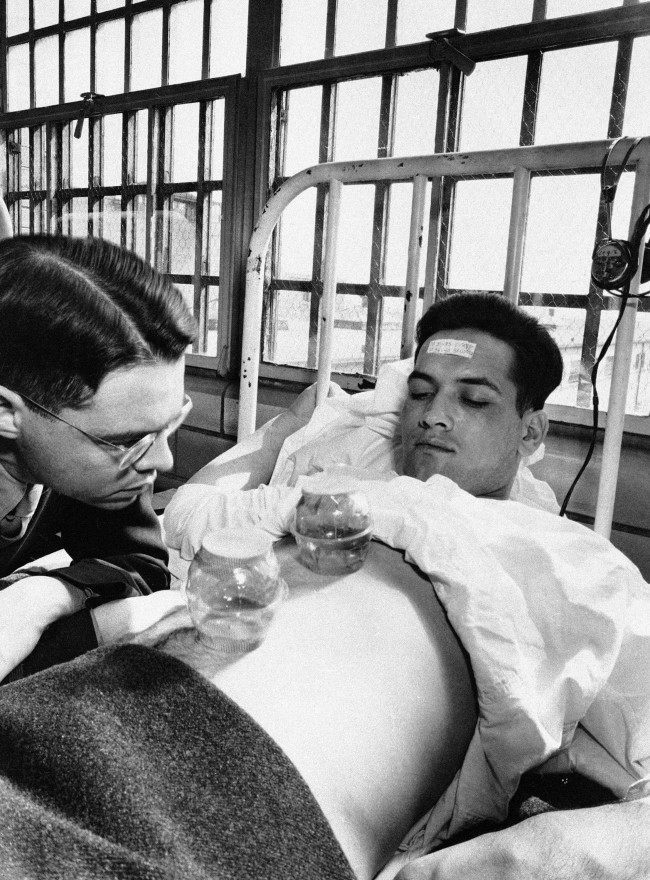
– In this June 25, 1945 picture, an army doctor watches as malaria-carrying mosquitoes bite the stomach of inmate Richard Knickerbockers, serving 10 to 14 years, in the malaria ward at Stateville Penitentiary in Crest Hill, Ill. Around the time of World War II, prisoners were enlisted to help the war effort by participating in studies that could help the troops. A series of malaria studies at Stateville Penitentiary in Illinois and two other penitentiaries were designed to test antimalarial drugs that could help soldiers fighting in the Pacific. Shocking as it may seem, government doctors once thought it was fine to experiment on disabled people and prison inmates.
Would you like to support Flashbak?
Please consider making a donation to our site. We don't want to rely on ads to bring you the best of visual culture. You can also support us by signing up to our Mailing List. And you can also follow us on Facebook, Instagram and Twitter. For great art and culture delivered to your door, visit our shop.









